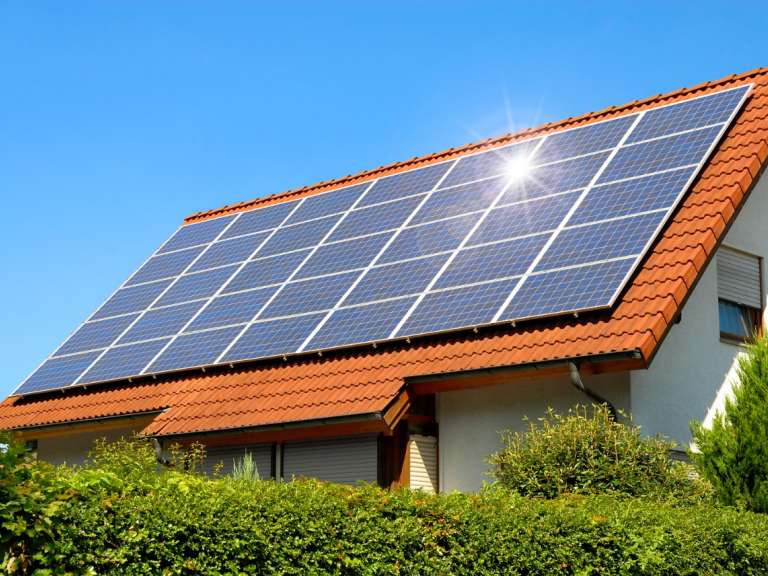Mention disruption, and most executives in the power generation industry know there is a threat.
New technologies have shaken up entire industries, and even pushed some companies to collapse. Blockbuster is a well-known example, as are Kodak, Motorola, and Nokia. Toys "R" Us recently fell victim to the ease of shopping online on Amazon.
What about the power industry?
The world needs electricity, so the power industry should benefit. Indeed, electricity generation is expected to increase by 45 percent between 2015 and 2040. This increase is propelled by rising living standards in emerging markets, which are driving up demand for electronic devices and home appliances, as well as visits to shopping malls and other services, according to the EIA's International Energy Outlook 2017.
However, while demand for power will rise, so will the challenges from technology.
"Disruptive competition comes out of nowhere," Vivek Wadhwa, author of The Driver in the Driverless Car: How Our Technology Choices Will Create the Future, wrote for MarketWatch. "The incumbents aren't ready for this and as a result, the vast majority of today's leading companies will likely become what I call toast—in a decade or less."
Cleaner Energy
A few trends are developing in the power generation industry, mainly focused on cleaner energy. According to the EIA's International Energy Outlook 2017, renewables will be the fastest-growing source of generation in the 2015–40 period, trailed by natural gas and nuclear. The slowest will be coal and fossil fuels, which many countries are cutting back on in favor of cleaner energies, spurred by consumer demand for sustainability.
One threat to the power industry is rooftop solar power. Tesla, a US company that produces electric cars, energy storage, and solar panels, has started selling solar roof tiles. They turn sunlight into electricity, which is stored in a battery that can also charge an electric car. IKEA has entered the rooftop solar panel business, bringing the Swedish furniture maker's distribution and marketing muscle to the game.
As the cost of solar roof systems come down, more people will be able to generate their own power and sell the surplus, converting their homes into a utility—and a new competitor for power plants.
In the electric car market, which should be a boon for power utilities as falling vehicle prices widen sales, disruption is also starting. Lightyear, a Dutch startup, has created a car that charges itself.
Yaniv Vardi, CEO of Panoramic Power, a provider of technology for monitoring energy consumption, says the advance of technology and smart devices will push up energy consumption, but not as much as expected. This is because more devices, from factory machinery to home appliances, are coming with sensors that allow users to reduce energy consumption, such as by upgrading machinery or powering down during off-hours.
"Utilities are no longer in a position to simply collect the check," Vardi wrote for Eco-Business.
How to Respond
To respond, power utilities must take action now.
The first step is to learn about the new technologies, including artificial intelligence, robotics, sensors, synthetic biology, and 3D printing, and how their convergence could impact the industry, says Wadhwa.
A good example is how ride-sharing companies like Uber are using sensors in smartphones to disrupt the taxi business.
Wadhwa says another step is for companies to train their staff on the new technologies and incorporate innovation on a companywide basis, not just the research department. Innovation—and disruption—can come from different disciplines, markets, and parts of the organization. A power company must enable and empower its workers to question the status quo as if they were a Silicon Valley startup. If the energy industry can't challenge its own foundations, startups are going to.
Hackathons can spark workers' creativity and give them a space to flex their innovation muscles through one-day problem-solving challenges. Diversifying the workforce can also help keep a company ahead of the disruptive curve by adding valuable new perspectives to the mix.
Waking Up
The power sector could learn from the response of hotel chains to Airbnb. The unexpected competition from the online lodging marketplace has been good for the industry after years of "sleepwalking," said Mark Wynne Smith, global CEO of JLL Hotels & Hospitality Group, a US-based investment management company, at the SAHIC Latin America hotel investment conference in Buenos Aires in September.
"We are much more worried than we were a few years back, and when we are worried we tend to think much deeper and make better decisions," he said.
This concern should prod power companies to act—now is the time to pursue innovation. For example, power companies can create apps to take advantage of sensors in their plants and pinpoint the best time to wash gas turbines for the best results and the least revenue loss. Plants can also create ways to examine data from sensors to help engineers make better decisions, such as by warning them of gradual production losses.
Wadhwa recommends that companies be on "a war footing" and that they listen and experiment to find new ways of doing business and new ways to reinvent and defend the company, as technologies crop up with greater frequency.
"The choice that leaders face," he says, "is to disrupt themselves—or to be disrupted."
